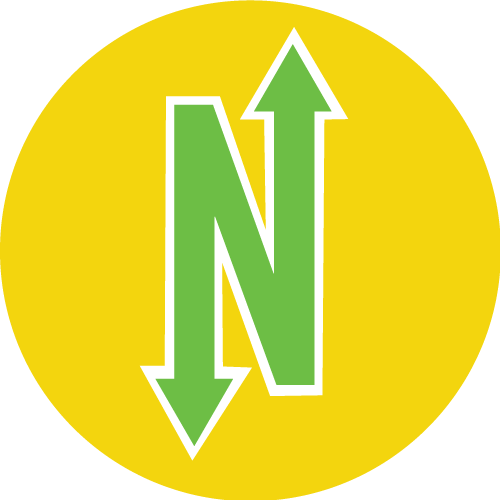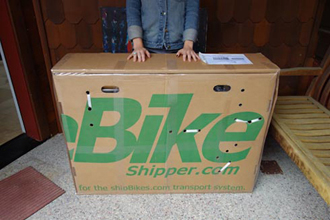25 July 2024
Most Flight Legroom/Longer Thailand Stays/Global Entry Delays
Nomadico issue #114
A weekly newsletter with four quick bites, edited by Tim Leffel, author of A Better Life for Half the Price and The World’s Cheapest Destinations. See past editions here, where your like-minded friends can subscribe and join you.
The Most Legroom on Long Flights
If you have a long-haul international flight coming up and you’ll be in the back of the plane, this guide to the roomiest seats in regular economy could be useful. Noting seat pitch, width, recline ability, and roominess of the cabin, it’s a list of which flights will be the most comfortable. I’ve been on two of them and will vouch that flying on Emirates in an Airbus 380 felt like going back in time to the 1980s, as in a far superior experience than what we’re stuck with now most of the time.
Hidden Costs of Home Ownership
If your parents are asking you when you’re going to settle down and buy a house, you might want to send them this Bankrate article on how much it really costs to own a home. When you add in insurance, taxes, maintenance, and repairs, the average U.S. homeowner with an average house is paying an extra $18,118 every year on top of their hefty mortgage. (It’s much higher in states like California.) You could probably pay for a year’s worth of Airbnb monthly rentals in much of the world on that amount alone.
More People Can Stay in Thailand for 60 Days
Thailand’s visa rules change more often than I buy new shoes, but the latest tweak is a positive one all around. First of all, citizens of more countries can enter without getting a visa in advance, from 57 nations to 93. In a great change for nomads passing through, visa-free visitors can now stay in Thailand for up to 60 days, compared to the earlier limit of 30 days. Get the full story here.
Global Entry Renewal Delays
My wife applied to renew her Global Entry status back in December, paying and then getting reimbursed from a travel credit card. As of July 17, she’s still waiting for a response. Apparently that has become so normal that the agency is giving a two-year grace period: you can keep using the program (and TSA PreCheck) as long as you applied in time to renew. According to this article that has a response from the agency, 77% of applications are handled automatically and are swift, but the 23% that are randomly reviewed manually are getting stuck in a huge backlog.
07/25/2424 July 2024
Book Freak 165: Amusing Ourselves to Death
Neil Postman's Prescient Warning About the Age of Digital Distraction
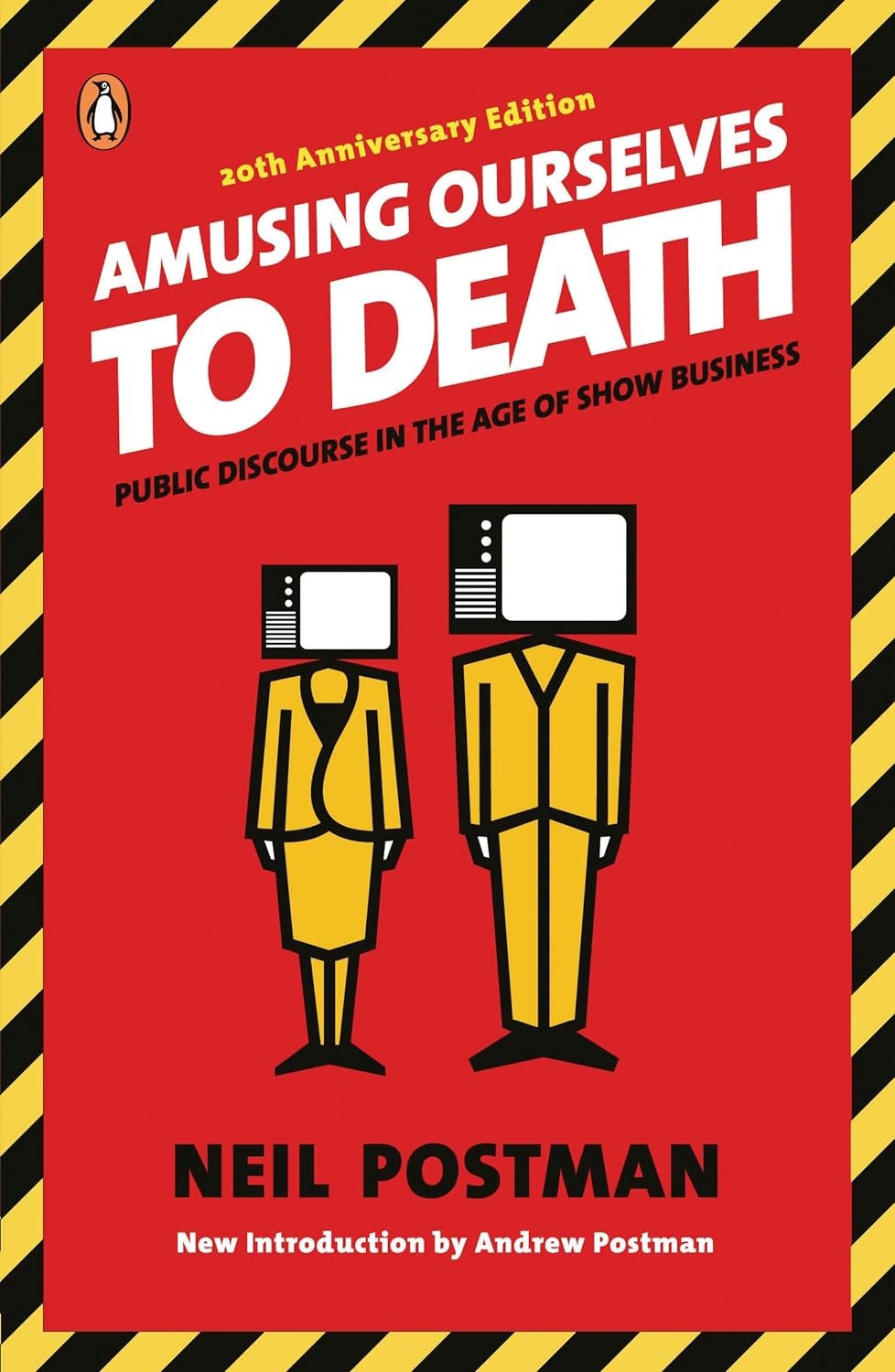
Get Amusing Ourselves to Death
Neil Postman’s Amusing Ourselves to Death was a 1985 wake-up call we didn’t know we’d need forty years later. Postman (1931-2003), a media theorist and cultural critic, argued that television was not just changing what we watch, but how we think and communicate as a society. While Postman’s focus was on television, his insights have become even more relevant in our current digital age. In an era dominated by social media, smartphones, and an ever-expanding array of digital entertainment options, Postman’s warnings about the impact of media on critical thinking and public discourse have only grown more urgent.
Here are four excerpts that are about television but easily apply to social media today:
Instagram:
“Americans no longer talk to each other, they entertain each other. They do not exchange ideas, they exchange images. They do not argue with propositions; they argue with good looks, celebrities and commercials.”
Twitter:
“We are presented not only with fragmented news but news without context, without consequences, without value, and therefore without essential seriousness; that is to say, news as pure entertainment.”
TikTok:
“Now … this” is commonly used on radio and television newscasts to indicate that what one has just heard or seen has no relevance to what one is about to hear or see, or possibly to anything one is ever likely to hear or see. The phrase is a means of acknowledging the fact that the world as mapped by the speeded-up electronic media has no order or meaning and is not to be taken seriously. There is no murder so brutal, no earthquake so devastating, no political blunder so costly—for that matter, no ball score so tantalizing or weather report so threatening—that it cannot be erased from our minds by a newscaster saying, “Now … this.” The newscaster means that you have thought long enough on the previous matter (approximately forty-five seconds), that you must not be morbidly preoccupied with it (let us say, for ninety seconds), and that you must now give your attention to another fragment of news or a commercial.
YouTube:
07/24/24Entertainment is the supra-ideology of all discourse on television. No matter what is depicted or from what point of view, the overarching presumption is that it is there for our amusement and pleasure. That is why even on news shows which provide us daily with fragments of tragedy and barbarism, we are urged by the newscasters to “join them tomorrow.” What for? One would think that several minutes of murder and mayhem would suffice as material for a month of sleepless nights.
23 July 2024
Glasswork / Bakuman
Books That Belong On Paper Issue No. 24
Books That Belong On Paper first appeared on the web as Wink Books and was edited by Carla Sinclair. Sign up here to get the issues a week early in your inbox.
HOT GLASS IS COOL IN THE HAND’S OF THE MURANO MAESTRO
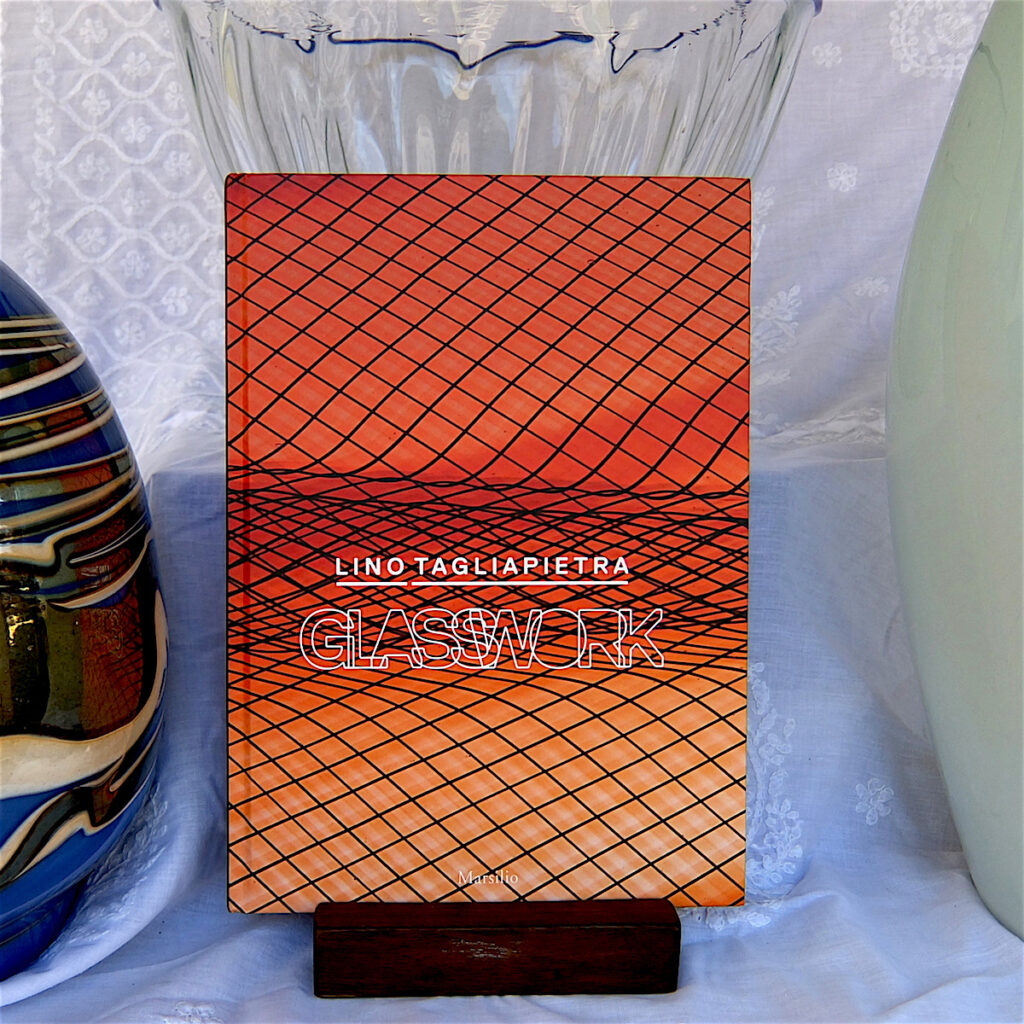




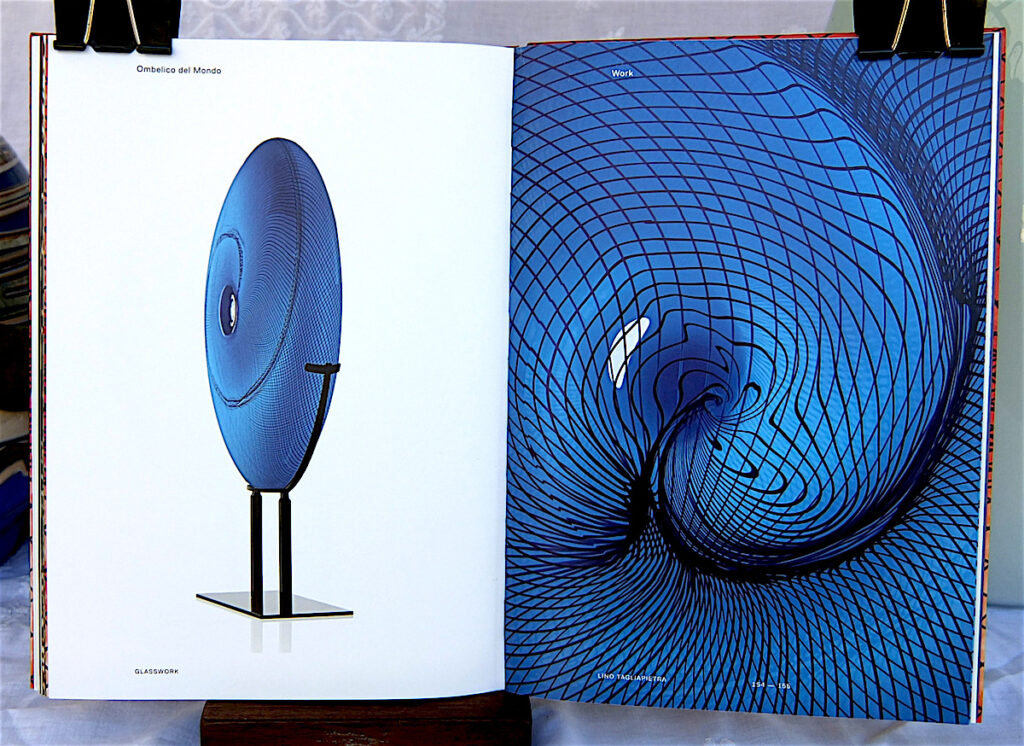



Lino Tagliapietra: Glasswork
by Lino Tagliapietra
Marsilio
2017, 172 pages, 8.5 x 0.7 x 11.9 inches, Hardcover
In the world of glass art, Lino Tagliapietra is widely revered for the technical virtuosity and mind-boggling beauty of his work, which expresses itself through forms that range from muscular to delicate, exuberant to tightly controlled, sometimes all at once. At 82, the Murano-born Maestro has been a mentor to generations of glass artists around the world, a hero to every would-be gaffer who’s picked up a blowpipe for the first time, dipped it into a furnace of molten glass, and given it a quick puff.
It would be a shame, though, if only those who appreciated glass art were familiar with Tagliapietra, which is why I wish Lino Tagliapietra: Glasswork made more of an effort to connect Tagliapietra’s work to the era in which it blossomed — the middle of the 20th century. That’s not to take anything away from the inspiration Tagliapietra has provided to such exemplary glass artists as Dale Chihuly, Dan Daley, Richard Marquis, and Dante Marioni, each of who contributed a short statement to Glasswork in praise of the Maestro. But Tagliapietra’s connection to glass is obvious — he deserves a place next to Charles and Ray Eames, Hans Hofmann, and Eero Saarinen, for a start.
On the other hand, Tagliapietra’s Mid-Century Modern aesthetic doesn’t need to share any spotlights to announce its roots, as the glorious images in Glasswork show. From his clear, candy-wrapper shaped vases of the early 1960s to the lacy teardrops and sumptuous saucers of the past few years, Tagliapietra’s work is effortlessly confident, which is probably what makes it so cool. We sense its authenticity immediately, and for good reason — Tagliapietra is not riffing on MCM, he helped invent it.
– Ben Marks
THE BESTSELLING SERIES BY THE CREATORS OF DEATH NOTE, NOW AVAILABLE IN A COMPLETE BOX SET


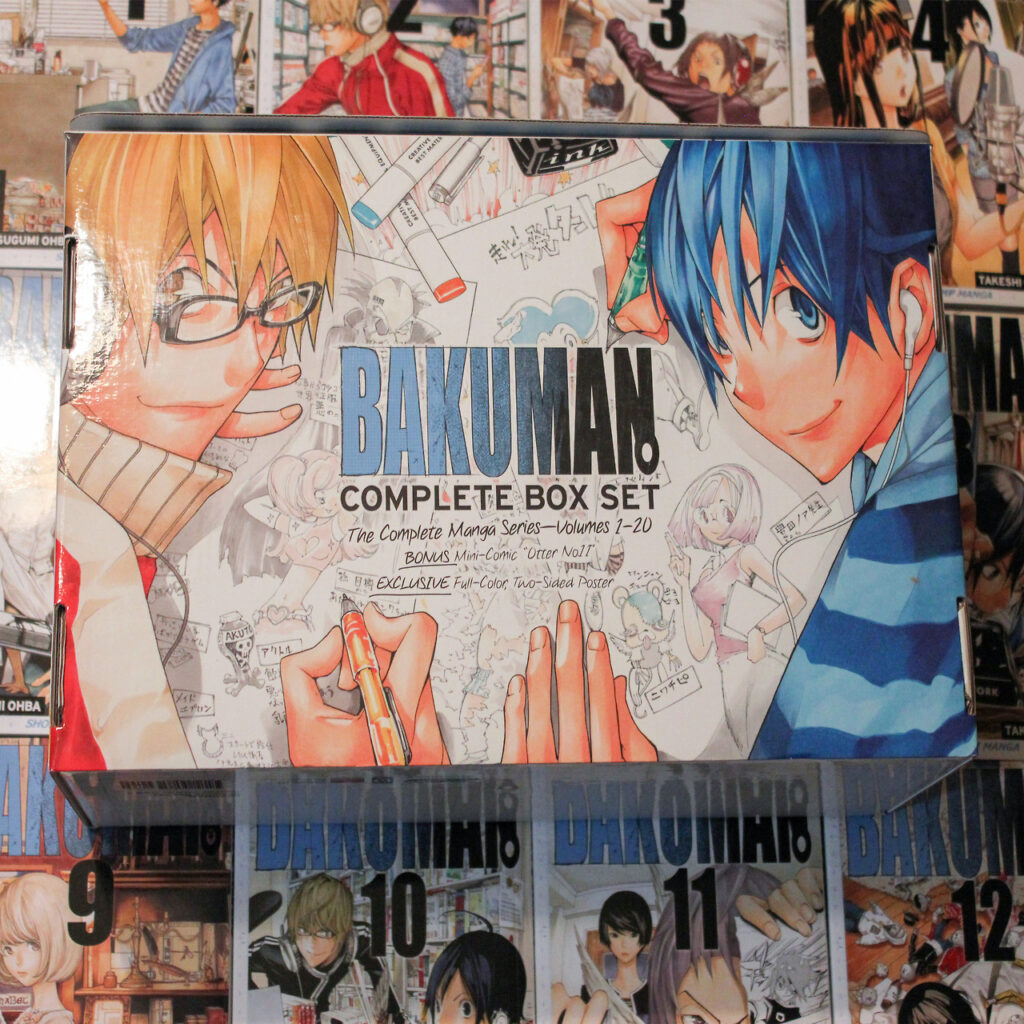

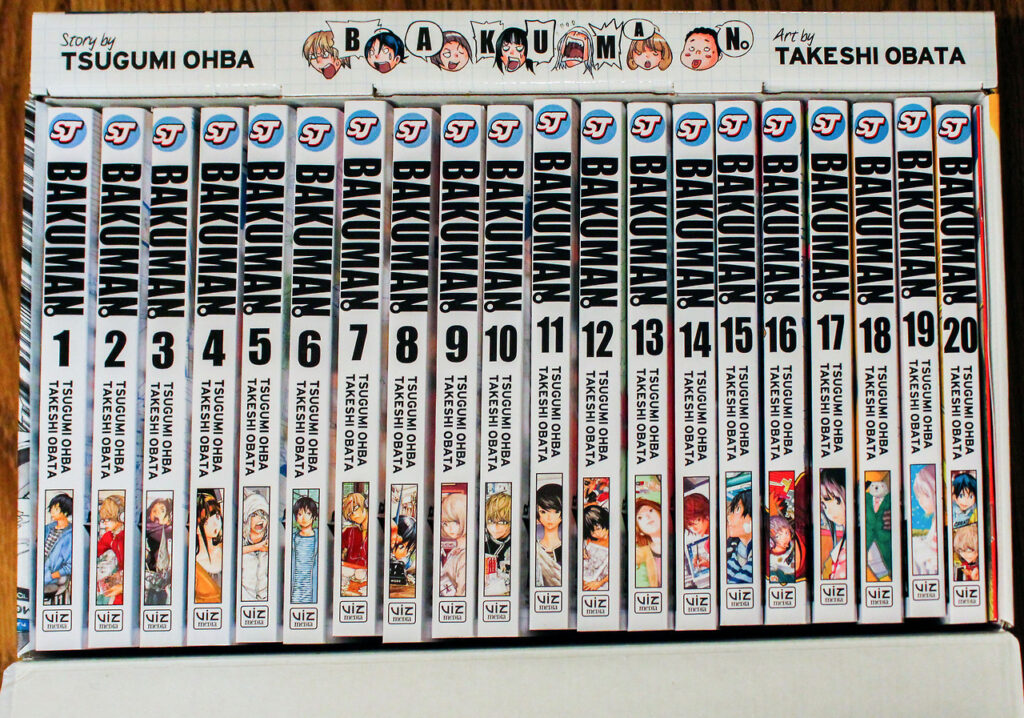
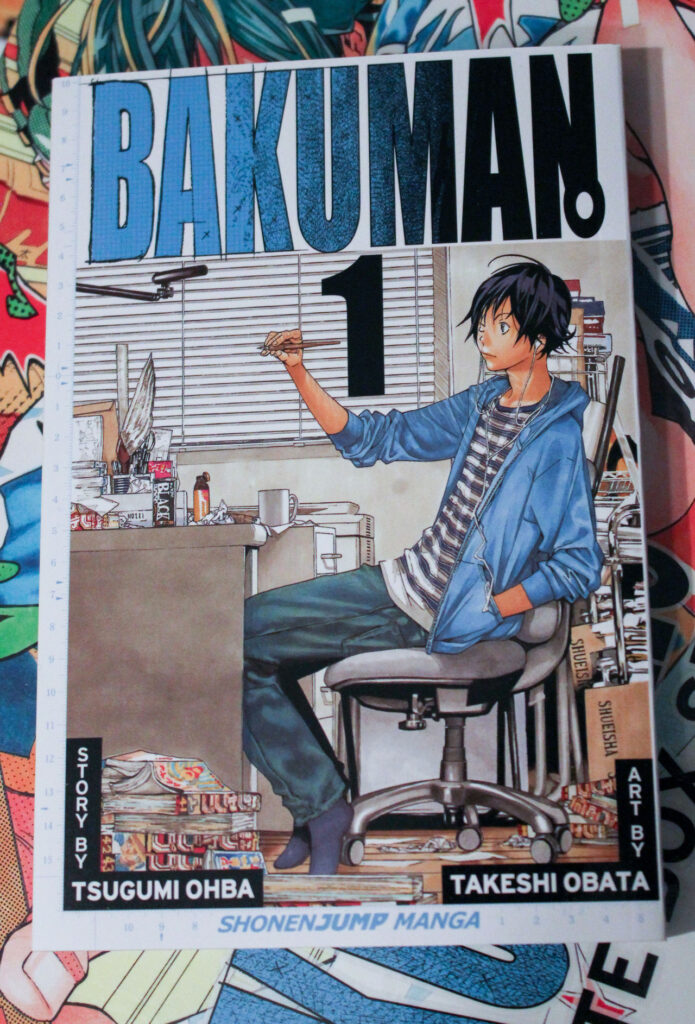
Bakuman. Complete Box Set (Volumes 1-20 with premium)
by Tsugumi Ohba, Takeshi Obata (Illustrator)
VIZ Media LLC
2013, 3864 pages, 7.5 x 5.3 x 5.0 inches, Paperback
“Is becoming a successful manga artist an achievable dream or just one big gamble?” The back cover of every Bakuman. poses this question, the central question to a series about the highs and lows of professional art, and the troubles an artist has to endure for their work. In Bakuman., two high school students named Mashiro and Takagi team up to create manga, taking on the roles of artist and writer, respectively. They have different and unique motivations for pursuing this path, Takagi doing it to avoid falling into the trap of a boring life, while Mashiro endeavors to impress the girl he loves. They’re both incredibly well developed characters that struggle, win, lose, and never accept defeat. Over the course of the 20 volumes in this set, we’re offered an in depth chronicle of their attempts at success.
Manga fans may recognize creators Tsugumi Ohba and Takeshi Obata as the team behind the popular Death Note. While Death Note was a high concept mystery, Bakuman. is a much more accessible “everyday life” kind of story that blends comedy and drama with ease. Now excuse me while I gush a little, because I think Bakuman. may be my favorite manga series. Any manga/comics fan should read it, but I cannot recommend it enough to anybody working in an artistic medium. Ohba & Obata use the simple plot to develop a complex reflection on the nature of creation. In their journey, Mashiro and Takagi have to confront the reality of achieving their dreams, struggling to discover if it was worth the struggle. They make sacrifices in the balance between art and commerce. They learn that life is what happens while you’re working towards your dreams, and that while it’s important to have a goal, it’s also important to appreciate where you are. There are no superpowers, no fights, no action scenes, just real character driven drama.
The complete set pictured here also includes a double-sided full color poster, and a bonus “issue” of Otter No. 11, a fictional comedy series produced within the main story of Bakuman. The box itself is of high quality, with gorgeous illustrations on every side, and a velcro flap that seals in the volumes. If you’re already a fan of Ohba & Obata, this is the best value for your money. New adopters should at least check out volume one, which introduces the boys on their first summer creating manga, racing to complete a demo work before school starts again. If you’re looking for a change of pace from your usual superhero or shonen fare, Bakuman. will not disappoint.
– Alex Strine
07/23/2422 July 2024
Stretching & Massage
Tools for Possibilities: issue no. 96
Once a week we’ll send out a page from Cool Tools: A Catalog of Possibilities. The tools might be outdated or obsolete, and the links to them may or may not work. We present these vintage recommendations as is because the possibilities they inspire are new. Sign up here to get Tools for Possibilities a week early in your inbox.
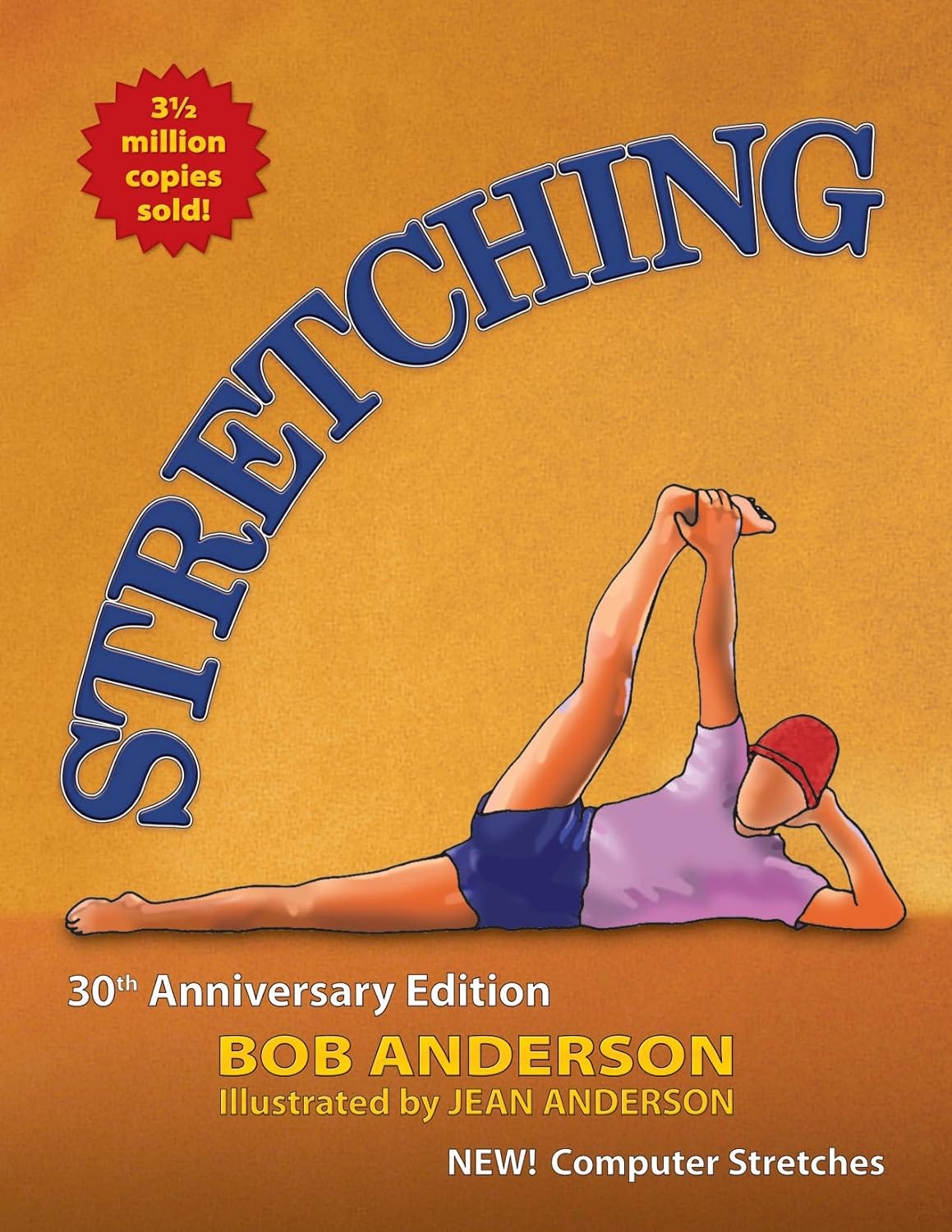
Most comprehensive stretching manual
I haven’t encountered any source on this subject as broad, accessible, and easily applied as Bob Anderson’s classic Stretching, a patient and friendly stand-in for my eight-grade P.E. teacher.
The 30th anniversary edition of this guidebook came out recently, with even more stretches and illustrations, and it’s easily the most comprehensive work on the subject. I love the activity-specific sections: cyclists, for instance, are shown stretches that not only address the muscle groups made tight and tense by our specific sport, but the stretches geared toward bike riders even include a bicycle to be utilized as a support. Activities from weightlifting to computer using get their own sections, too.
Organizationally, Stretching shines. Tight neck? Rigid shoulders? Thumb through to your prescribed routine and get to work. With minimal flexibility but a willingness to make an effort, almost anyone can use this book to become more limber, healthier. — Elon Schoenholz
- Stretching feels good when done correctly. You do not have to push the limits or attempt to go further each day. It should not be a personal contest to see how far you can stretch. Stretching should be tailored to your particular muscular structure, flexibility, and varying tension levels. The key is regularity and relaxation. The object is to reduce muscular tension, thereby promoting freer movement—not to concentrate on attaining extreme flexibility, which often leads to overstretching and injury.
- Who Should Stretch?
Everyone can learn to stretch, regardless of age or flexibility. You do not need to be in top physical condition or have specific athletic skills. Whether you sit at a desk all day, dig ditches, do housework, stand at an assembly line, drive a truck or exercise regularly, the same techniques of stretching apply….if you are healthy, without any specific physical problems, you can learn how to stretch safely and enjoyably. - Why Stretch?
– Reduce muscle tension and make the body feel more relaxed
– Help coordination by allowing for freer and easier movement
– Make strenuous activities like running, skiing, tennis, swimming, and cycling easier because it prepares you for activity; it’s a way of signaling the muscles that they are about to be used.
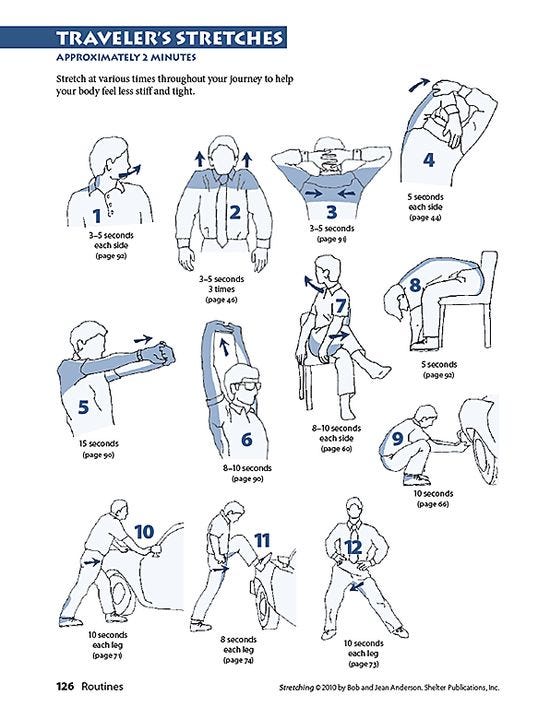
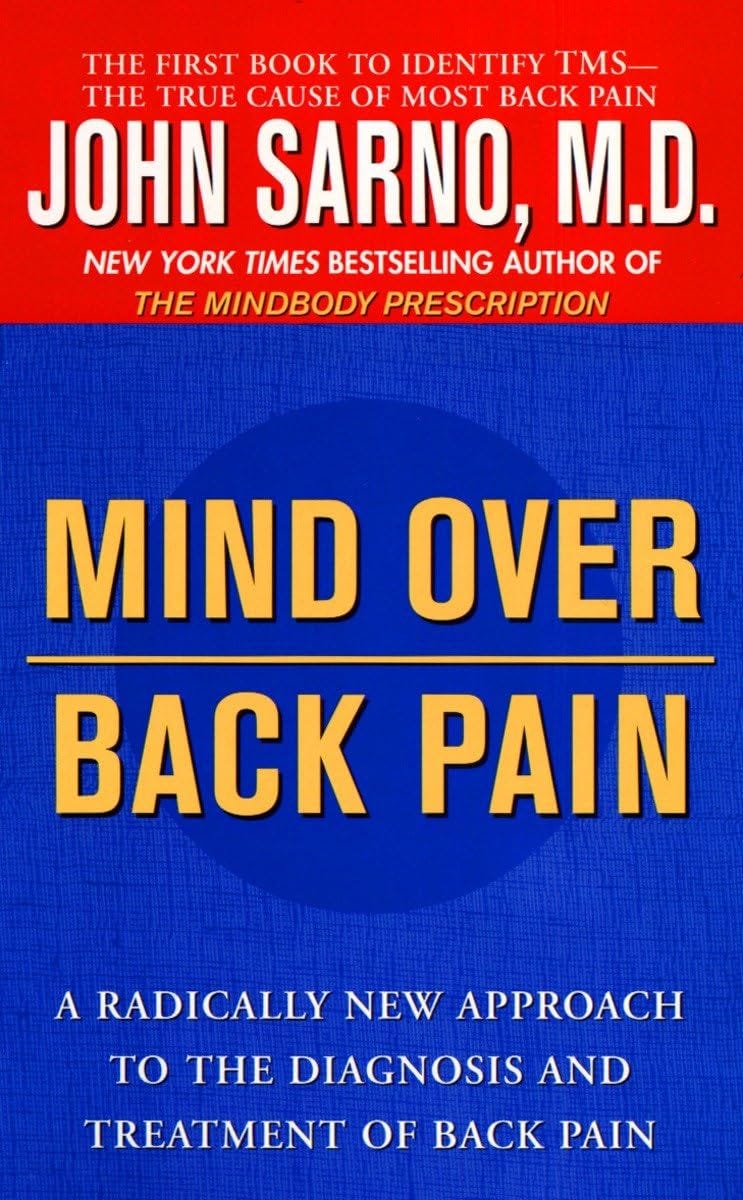
Unorthodox back pain philosophy
Back pain is ubiquitous in developed countries. Yet the honest truth is that science is uncertain as to what causes it. Theories abound, as does a lot of pseudo-therapy. There are probably multiple origins and different varieties of lower back pain. However, one theory says a large portion of back pain starts with mental tension. If you have an inkling that your back pain is linked to stress, I strongly suggest you seek out this perennially-in-print book (since 1972). My speaking agent, who deals with hundreds of stressed-out type A’s and the consequential epidemic of back pain they carry with them, routinely hands out this book. It seems to be the one thing that helps them the most. It helped me. By adopting the view that lower back pain is a syndrome in large part fostered by the mind/body complex, I’ve been able to avoid surgery and painkillers and resume my life. Your mileage may vary, but it’s worth a read. — KK
- The reason for this obsession with discs is that it does seem logical. There are those degenerating structures at the lower end of the spine, right where a lot of pain and spasms occur; there are lumbar and sacral nerves conveniently located so that they can be compressed by bulging or herniated discs; there is pain in the leg, proving that those nerves are compressed.
- What these data confirm is that degenerative processes have nothing to do with most back pain. Degeneration is progressive and relentless; serial X rays as one ages document this fact. Yet back pain is far less common in the older age groups. According to the conventional diagnostic concepts, everyone over the age of sixty should have back pain.The bar graph in Figure 9 [above] gives the age by breakdown by decade. Seventy-seven percent of the group fell between the ages of thirty and fifty-nine. Note that there are fewer patients in their sixties than in their twenties! Since the majority of back pain syndromes are attributed to degenerative processes – for example, degenerative osteoarthritis and degenerative disc disease – it is strange, indeed, that there were only thirteen patients aged sixty to sixty-nine, and seven in their seventies.
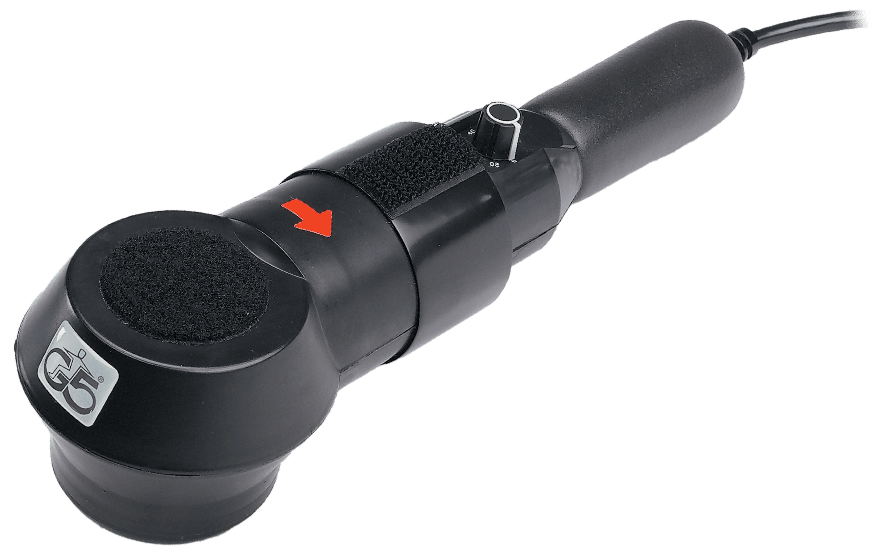
Professional massage assist
The G5 is a professional-grade massage unit that has long been a staple of naturopaths, chiropractors and physiotherapists, many of whom report still using their 40- or 50-year-old units on a daily basis. The G5 comes in dozen or so professional models for use in hospitals, physical therapy and similar clinics. Most pro sports teams (football, basketball, baseball, anyway) have a G5 in their training rooms. This is no Costco-type unit, but an unbelievably robust massage gun that will astonish you within seconds.
The larger professional units with stands and rollers go for about $1,200. The secret to their extraordinarily powerful and effective massage action is a coiled cable that turns and rotates the head, rather than pounding or vibrating as less durable units do. All of the G5s have changeable applicator heads for doing reflexology, exfoliation treatments, lymphatic drainage, cellulite reduction, Trigger Point therapy, therapeutic massage, or just plain old relaxation massage.
For home use I recommend the Pro-Power unit, which is sold as a portable travel version of the G5. It goes for about $350. Since I write and work at a desk a lot, I use mine almost daily, especially when doing big long projects. If you don’t want to take the time to schedule and pay for an $80 massage, anyone can use this on you without getting sore hands or wanting to quit. I actually own two! — Hakim Chishti
07/22/2421 July 2024
Say What You See/Artists at work/Creative introduction
Recomendo - issue #419
Sign up here to get Recomendo a week early in your inbox.
Say What You See
I use Midjourney to create AI illustrations of dream imagery, and to improve my skills in writing AI image prompts, I’ve been playing a Google Arts & Culture game called “Say What You See.” The gist of the game is to describe what you see and aim for at least a 50% match—or higher—to the original prompt. Warning: It can get very frustrating past level three. Thankfully, if you want to come back to it, you can skip the easier levels anytime. — CD
Artists at work
I love watching artists work in their studios. I really delight in seeing how they make their art, what tools and techniques they use, and their material approach to creation. Getting access to a studio is rare, but very easy to do via two YouTube channels. Art21 is a multi-season PBS show, available on YT, that features a contemporary American artist at work in their workshop or studio. Some artists even reveal their process in detail, which is a plus. The other venue is Craft in America, another PBS show, which lets you watch how crafts people manifest their exquisite artifacts, such as a chair from a log, or a knitted coral reef. I am constantly inspired to make my own art after watching others create art from such raw ingredients. — KK
A creative way to introduce yourself in emails
I recently came across a clever idea in an email I received. At the bottom of the email, there was a link labeled “About me.” I clicked on it and was taken to the results of a Perplexity search about the sender. It was an ingenious way to provide a snapshot of who they are, and I found it so useful and creative that I decided to steal the idea myself. — MF
Cordless metal eater
If I had to re-assemble my workshop from scratch, one of the first tools I would buy would be a cordless angle grinder. I would not have guessed that a decade ago, but I use mine all the time now. I’ve found that an angle grinder is the perfect tool for cutting through thick or thin metal. I can cut rebar, metal sheeting, chicken wire, hardware mesh, rusty nails, old hinges, stripped screw heads, welded parts, etc. It is the cheapest way cut metal. The cordless part (a little more expensive) makes it so easy to grab and go. Because they grind with grit instead of cutting with teeth, they aren’t as scary as a saw, too. You can find them for all battery types; mine is a Dewalt DCG 412. — KK
Peppermint spider repellent
The only active ingredient in this bottle of Mighty Mint spider repellent spray is peppermint oil. I spray it around the windows on the outside of our house, outdoor furniture, and potted plants, and it keeps them from building webs. The label says for best results use twice a week, but in my experience, once every couple of weeks seems to be frequent enough. — MF
35 Phrases To Set Boundaries
Here is something everyone should have in their communication toolkit: “35 Phrases To Set Boundaries Firmly and Fairly”. This article provides practical phrases and advice on how to assertively set boundaries without causing unnecessary conflict. These phrases work in a wide range of scenarios, from dealing with children and family to workplace dynamics. Here are a few examples:
- “I’m not available.” – Helps establish off-hours and personal time boundaries.
- “I need you to help me.” – Encourages teamwork and shared responsibility.
- “I don’t agree.” – Clearly states disagreement while remaining open to finding a mutual solution.
- “I understand you need my help, but I cannot work on this right now.” – Balances empathy with personal limits.
- “I prefer not to discuss this topic with you. It makes me feel uncomfortable.” – Protects emotional well-being by avoiding triggering subjects.
Note: Both of my recommendations this week were discovered in Matt Rutherford’s newsletter, 👓 Stuff—a weekly email crammed full of tips for a better life. If you love Recomendo, I highly recommend subscribing to Matt’s newsletter. — CD
07/21/2419 July 2024
Gar’s Tips & Tools – Issue #180
Weekly-ish (ish) access to tools, techniques, and shop tales from the worlds of DIY
Gar’s Tips, Tools, and Shop Tales is published by Cool Tools Lab. To receive the newsletter a week early, sign up here.
In Praise of Handwritten Notes

In the early hours of the 21st century, I noticed something interesting. I was losing my ability to write longhand. I was exclusively using a keyboard and my handwriting was suffering as a result. In high school, I’d taken a mechanical drawing class with dreams of becoming an architect, engineer, graphic designer, or similar creative field, and I’d begun practicing an attractive technically inspired print writing style. That was all gone by the 21st century. I could barely write out my own name without making a mess. I could no longer read my own words and was struggling to form the letters. I decided to get a pack of Moleskine Cahiers pocket notebooks and write out all of my daily notes, ideas, sketches, writing research, etc. by hand. I’ve never looked back. Some 20 years on, I’m never without a notebook and a Varsity fountain pen in my pocket. I can’t say my handsome writing style has come back, but then, I haven’t really tried. I do love looking back on several dozen years of notebooks, seeing my thought process in, say 2012. Now, I’d love to get back to regularly drawing/sketching, another analog muscle that has long atrophied.
Designing a USB-C-based Breadboard Power Supply
I love this little USB-C-based breadboard power supply that Zach of Digi-Key’s Byte-Sized Engineer created. This is an update and improvement over an earlier breadboard power supply he built. This one uses a CYPD3177-24LQXQT power management IC, a custom-designed PCB, USB-C power, and a custom 2-color 3DP enclosure. Zach can select voltages between 3.3V, 5V, 9V, 12V, 15V, 20V on both rails of the board. By the time the project is over, he already has changes he wants to make on the next iteration. But as he points out, you need a version 1 to know what changes you want to make on version 2.
Refreshing Bit Driver Magnets
You don’t even have to watch the video to get the gist of this little repair job. If the magnets inside your bit holders get weak, you can add a new rare earth magnet with superglue, and your driver is good as new.
Getting Started in Non-Welding Metalwork
If you’ve ever flirted with the idea of getting into metalwork without having to know welding, this fantastic 38-minute video is a must-watch. In it, seasoned maker, YouTuber, and humorist, Wesley Treat takes you through the essentials of metalworking with aluminum—no welding required. He starts by poking fun at the competitive nature of welders, then quickly gets into the nitty-gritty of tools and techniques. You’ll learn how to cut aluminum using a variety of tools, from electric shears to jigsaws, each explained with tons of practical tips along the way. Deburring to remove rough edges and bending methods using everything from hand seamers to full-sized metal bending brakes are covered in detail. Drilling and fastening techniques, including the use of rivets and screws, are also discussed, providing a surprisingly comprehensive guide to working with aluminum. Wesley also shares valuable advice on sourcing materials and adding finishing touches to ensure your projects look professional. Along the way he also shares his favorite, like the DeWalt 20V Max XR jigsaw, the Harbor Fright horizontal bandsaw, and the Klein Tools Notcher. This vid is packed with insights and practical advice, making it perfect for both beginners and experienced makers looking to expand their skills.
Cleaning with Tub ‘o Towels
I’ve heard praises for Tub ‘o Towels before, the heavy-duty shop cleaning wipes. In this video, The Tool Bandit extols their virtues in cleaning up greasy, dirty tool handles.
Maker’s Muse
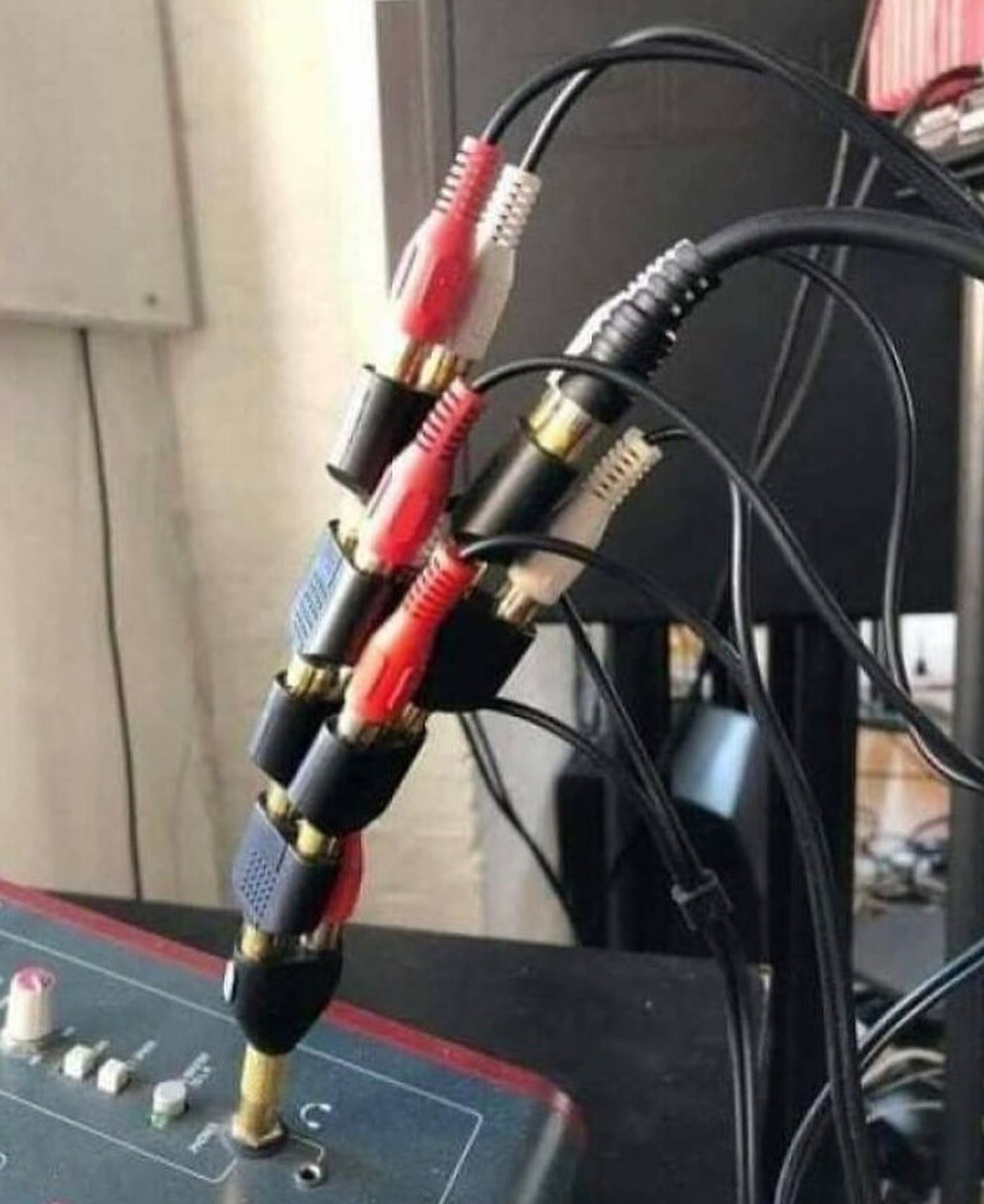
What’s that humming? Does anyone hear a hum?
Consider a Paid Subscription
Gar’s Tips & Tools is always free. But if you if you find ir truly useful to you, consider a paid subscription ($8/month). This keeps me in coffee and potato chips while I’m working on this labor of love. If you really want to show your patronage, consider becoming a Hero of the Realm. I will send custom packages of goodies (books, tools, zines, and more) to all my Heroes.
Thanks to all those who have already subscribed. You are the Kapton tape on my 3D print bed.
ALL REVIEWS
EDITOR'S FAVORITES
COOL TOOLS SHOW PODCAST
WHAT'S IN MY BAG?
17 July 2024

ABOUT COOL TOOLS
Cool Tools is a web site which recommends the best/cheapest tools available. Tools are defined broadly as anything that can be useful. This includes hand tools, machines, books, software, gadgets, websites, maps, and even ideas. All reviews are positive raves written by real users. We don’t bother with negative reviews because our intent is to only offer the best.
One new tool is posted each weekday. Cool Tools does NOT sell anything. The site provides prices and convenient sources for readers to purchase items.
When Amazon.com is listed as a source (which it often is because of its prices and convenience) Cool Tools receives a fractional fee from Amazon if items are purchased at Amazon on that visit. Cool Tools also earns revenue from Google ads, although we have no foreknowledge nor much control of which ads will appear.
We recently posted a short history of Cool Tools which included current stats as of April 2008. This explains both the genesis of this site, and the tools we use to operate it.

